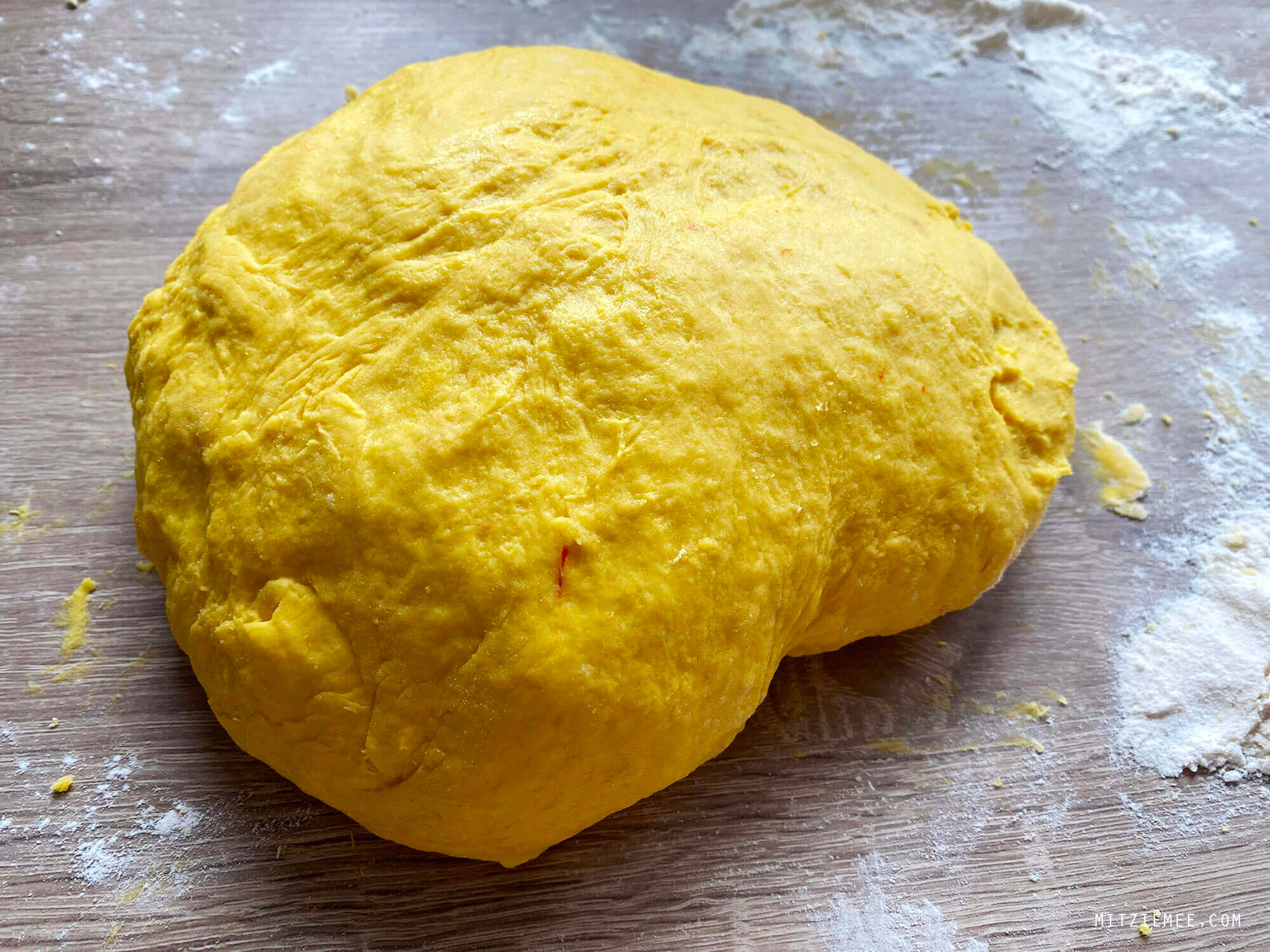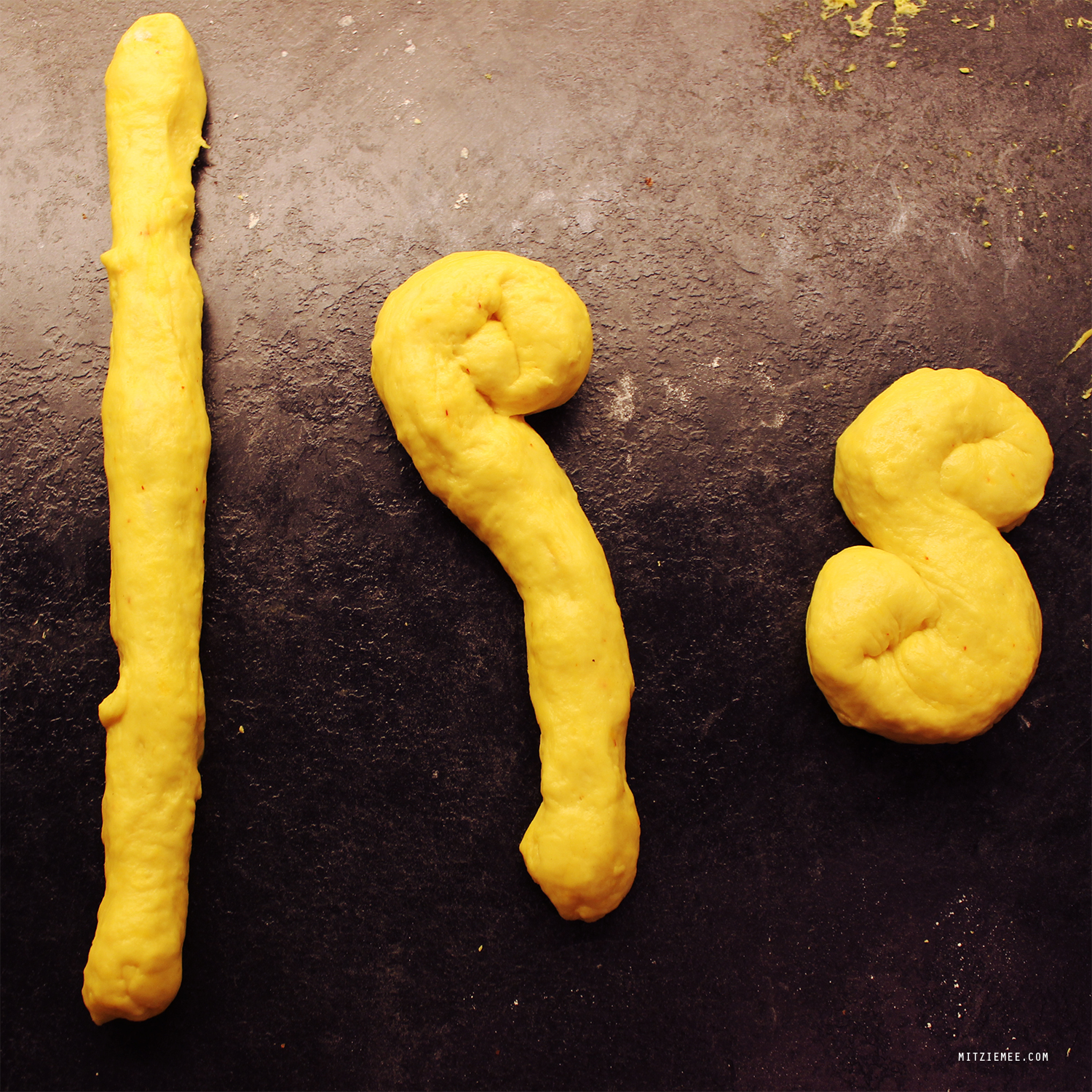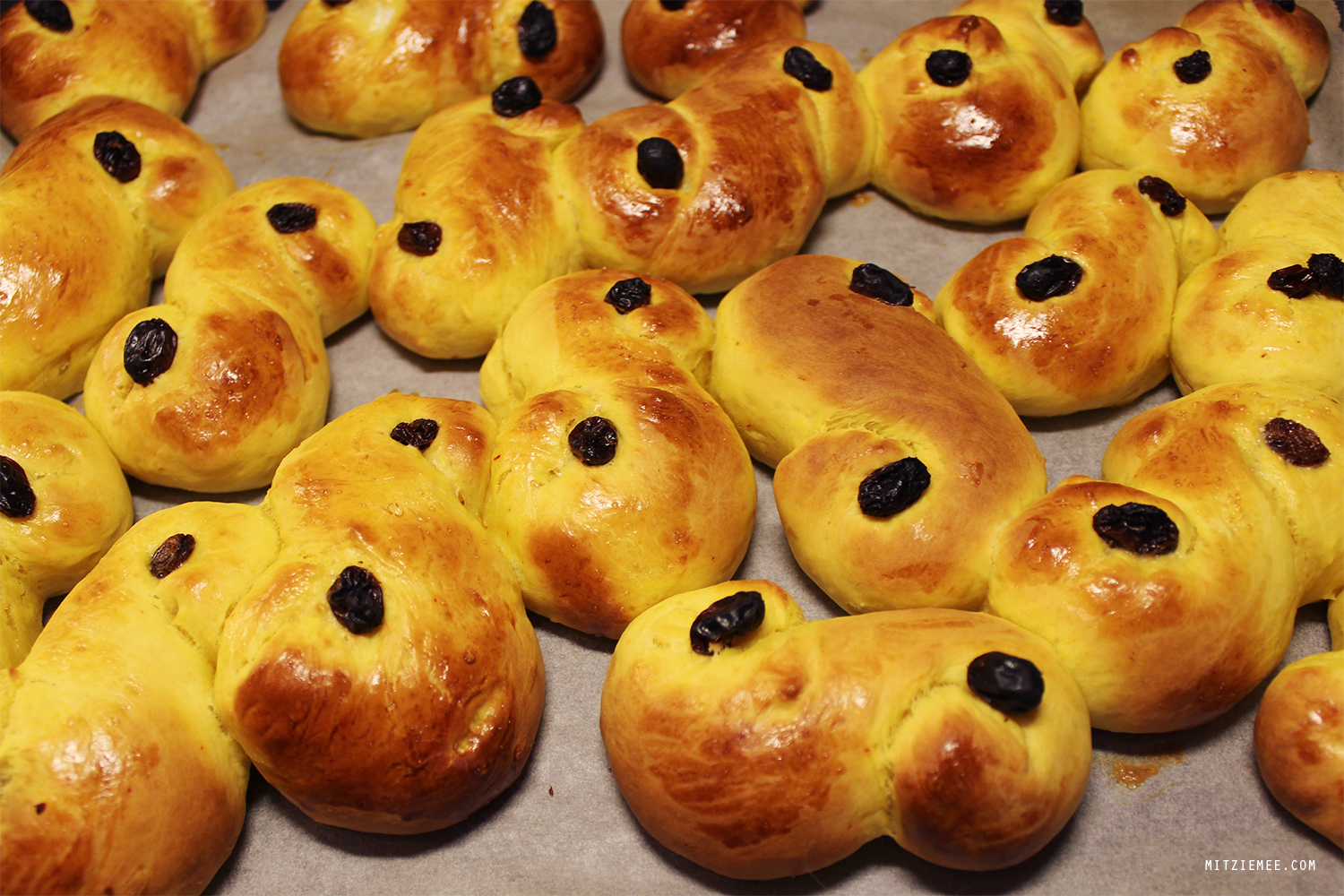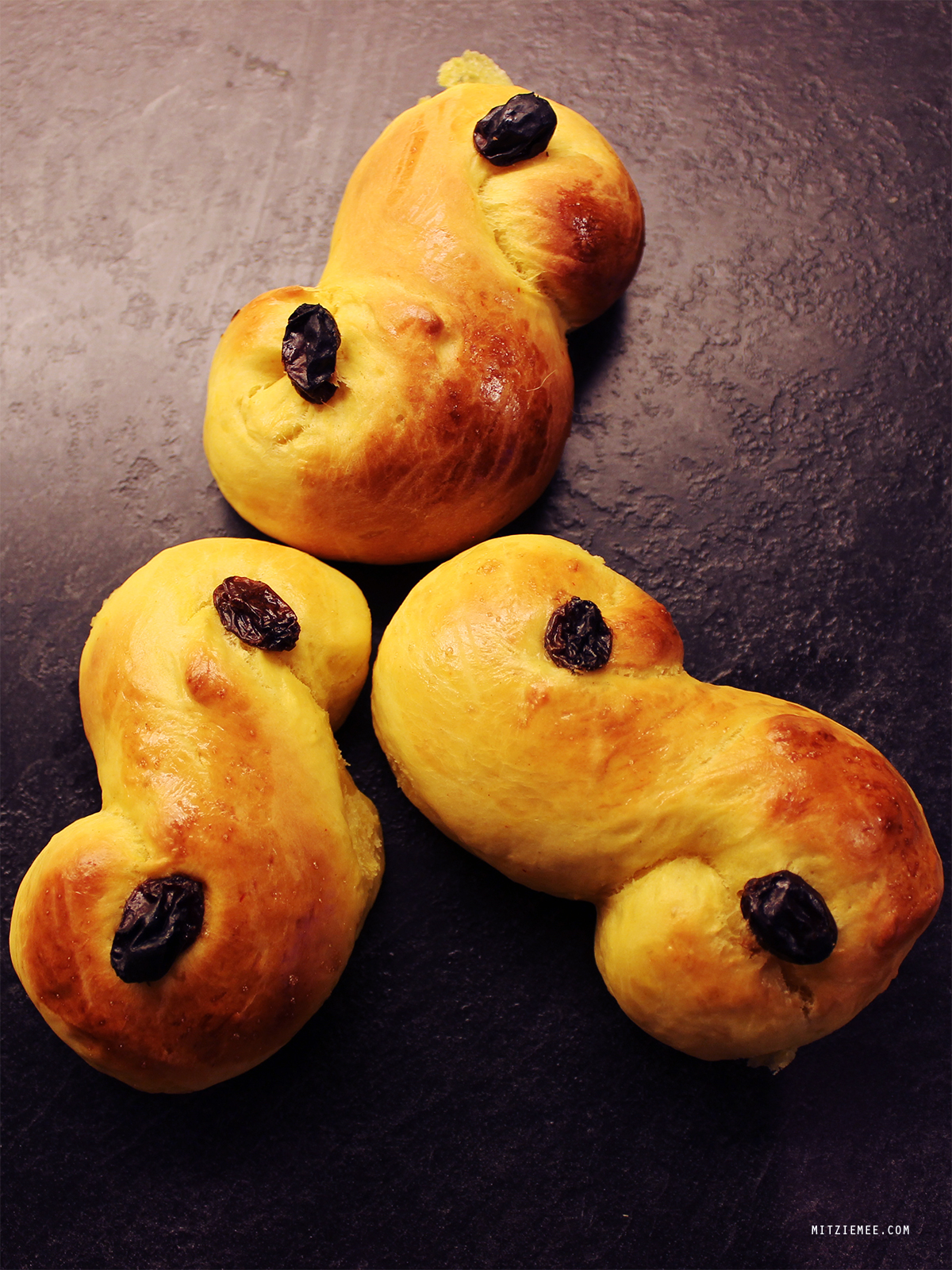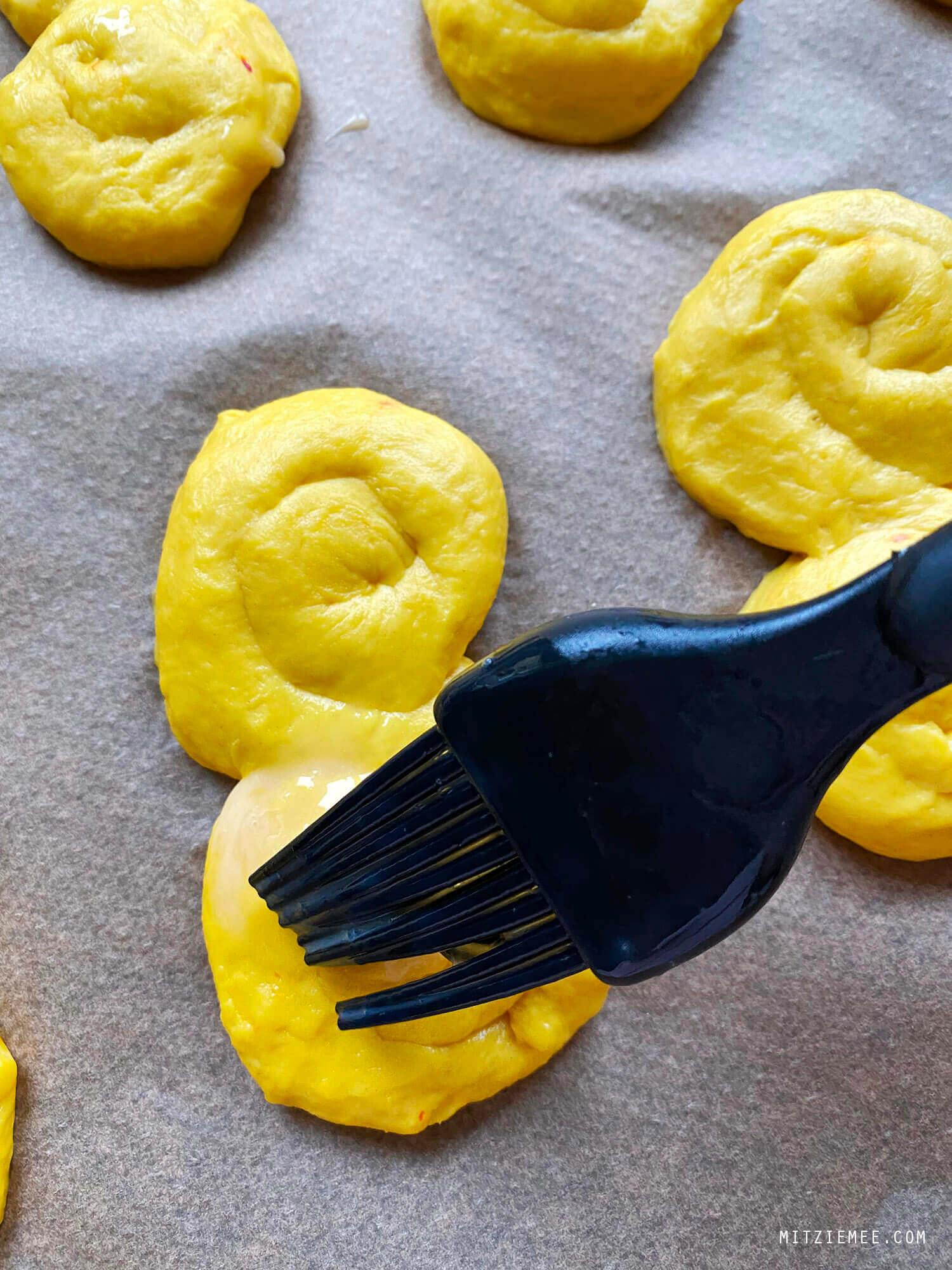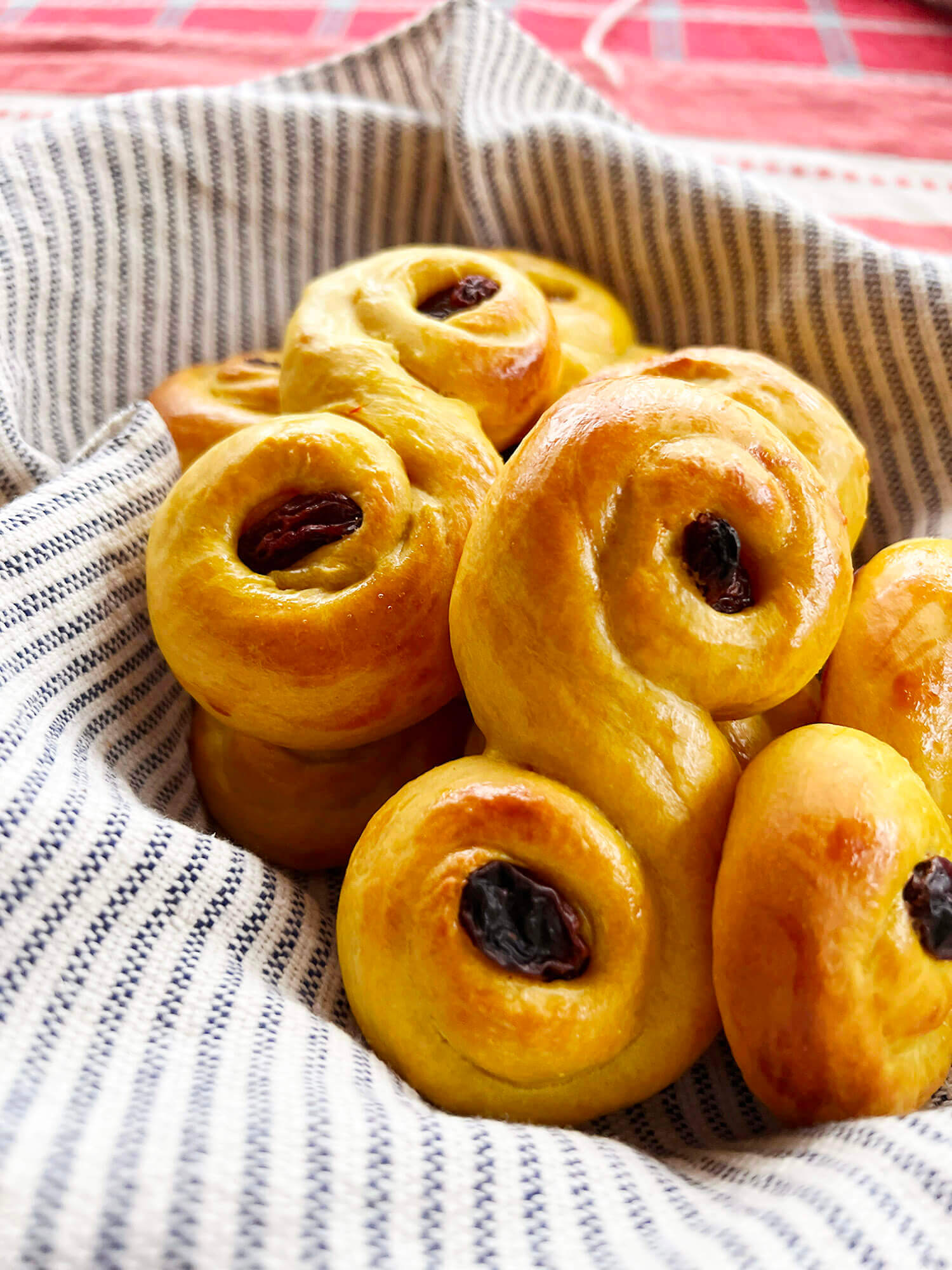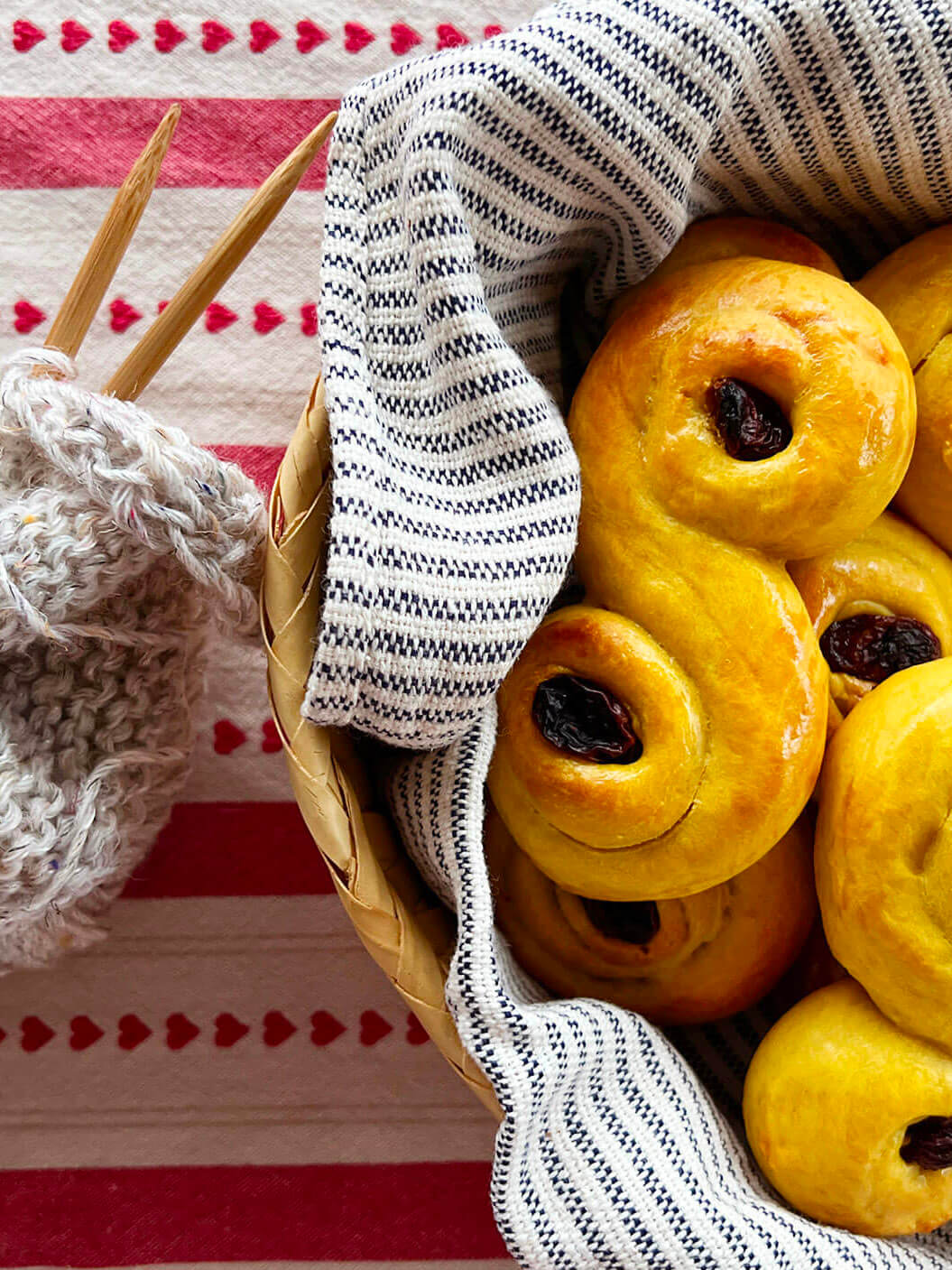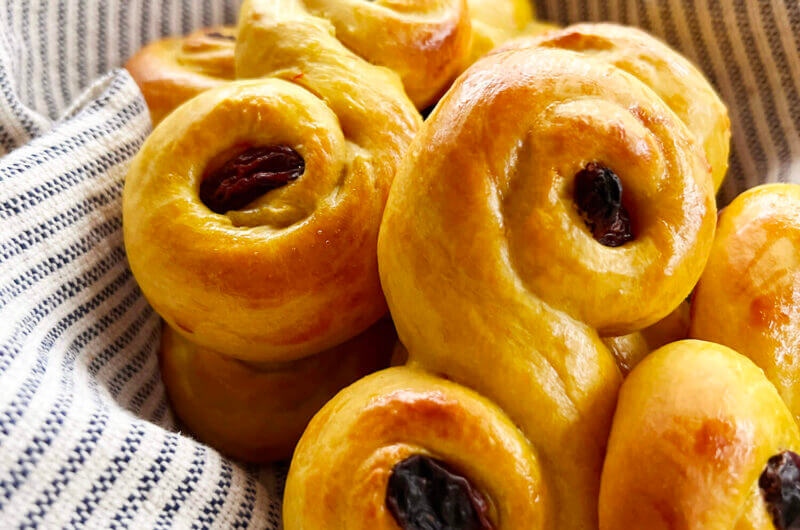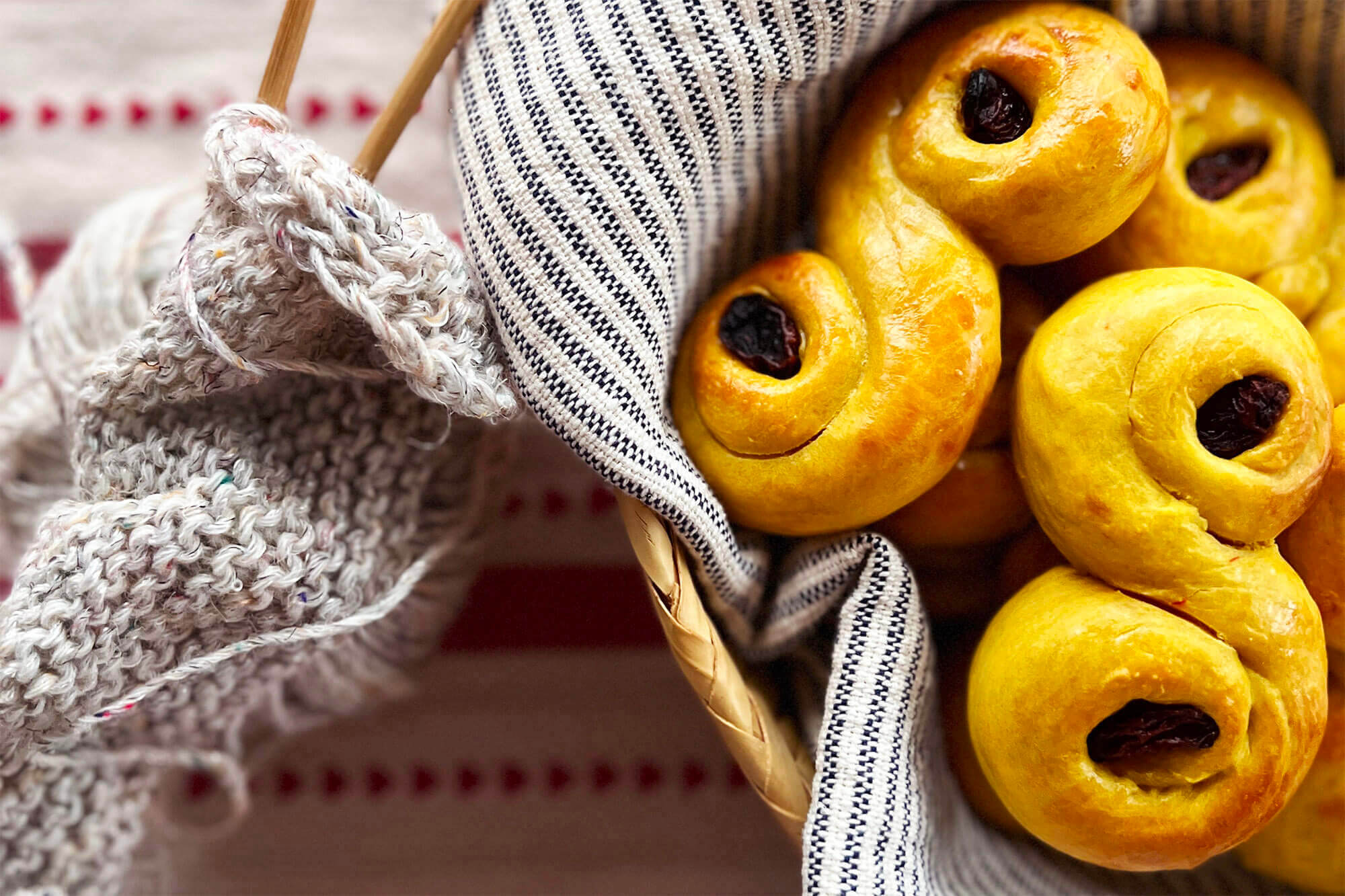
Lussekatter are Swedish saffron buns, which you eat throughout December in Sweden. These golden-yellow buns are a staple during the Christmas season, particularly on Saint Lucia’s Day, which is celebrated on December 13th. Saint Lucia was a young Christian girl who was martyred in 304 CE. According to legend, Lucia wore a crown of candles to light her way as she secretly brought food to persecuted Christians hiding in Roman catacombs. The lussekatter are a highlight of the Lucia celebrations, where girls and boys dressed in white gowns sing songs and serve these delicious buns, symbolizing the light with their bright color in the dark Scandinavian winter.
I used to live in Sweden for 6 years, and when I am baking lussekatter, it brings back lots of nice memories from student life and Sweden-style Christmas fun, including lussekatter and Blossa Glögg (Swedish mulled wine). Even if you do not have any Swedish Christmas memories to dwell on, you should still consider adding Swedish lussekatter to your holiday baking schedule. They are not savory, but they are also far from as sweet as other Christmas cookies can be, and they taste really good, served hot, straight from the oven, with mulled wine or hot chocolate.
Some people cheat, and replace saffron with turmeric, though while turmeric also gives the buns a nice yellow color, you will be missing out on the delicious saffron flavor, which is what makes the lussekatter so delicious.
Like most people in Sweden I have always made my lussekatter with Kesella (quark/fromage blanc from the Swedish dairy brand Arla), as it has been common sense among Swedes for years, that adding Kesella makes the lussekatter more moist. Though recently, there has been a fierce debate in Sweden about whether it is actually the case or if it’s merely a myth, resulting from a well-executed PR trick from Arla. Judging from various expert opinions, it seems that the latter is the case, but as I have always made my Lussekatter with Kesella, it takes more to shake my faith in Kesella, kind of like telling a kid that Santa doesn’t exist:)
The photos in this post are from two different batches. The dough is rolled into medium-thin ropes, but the first batch, was made from thicker dough-ropes and thus resulted in bigger buns:)
Recipe: Lussekatter – Swedish Saffron Buns
20
pcsLussekatter are Swedish saffron buns, which you eat throughout December in Sweden. These golden-yellow buns are a staple during the Christmas season, particularly on Saint Lucia’s Day, which is celebrated on December 13th.
Keep the screen of your device on
Ingredients
3.5 oz (100g) butter
1 1/4 cup (3dl) milk
5.3 oz (150g) quark. Can be substituted with fromage blanc.
1 oz (25g) fresh yeast
1/2 tsp salt
1/2 cup (1 dl) white sugar
2 eggs (one for the dough and one or brushing)
5.5 cups (13 dl) flour
Raisins for decoration
Directions
- Melt the butter in a saucepan. Add the milk and heat the mixture. Test the temperature with your finger. It should be slightly warm, but not too hot. Add the yeast, remove the pan from the heat and stir until the yeast is dissolved.
- If you are using saffron threads (recommended) remember to grind them before use. This can be done with a mortar and pestle or an electrical grinder. You can also just use the backside of a spoon on a cutting board, but make sure that the threads are properly ground, so the color and flavor come out.
- Add salt, sugar and saffron.
- Pour the mixture into a big bowl and add the quark. Beat the egg lightly before adding it to the mixture.
- Add the flour little by little. The dough should be tender, and you probably do not need to use all the flour.
- Knead the dough 15 minutes or until it feels is smooth and supple. Let the dough rise for 1 hour.
Knead the dough thoroughly again. - Take a piece of dough, the size of a scone, and roll it into a 6″ (20cm) long rope. Shape the rope into an “S”, and curl the ends a little extra (see pictures below). Flatten the Lussekatt a little with your fingers. Place the Lussekatt on baking paper on a baking tray.
- Repeat this procedure until the dough has been used. It will get you around 15-25 lussekatter.
- Let the buns rise again on the baking tray for 20 minutes.
- Brush the buns with egg and decorate with raisins.
- Bake the buns in the oven for approx. 8 minutes at 395°F (200°C) in a convection oven (435°F (225°C) in a conventional oven). Keep an eye on the Lussekatter in the oven. The baking time depends on the size. If your Lussekatter are on the taller side (larger than an ordinary scone), increase the baking time.
